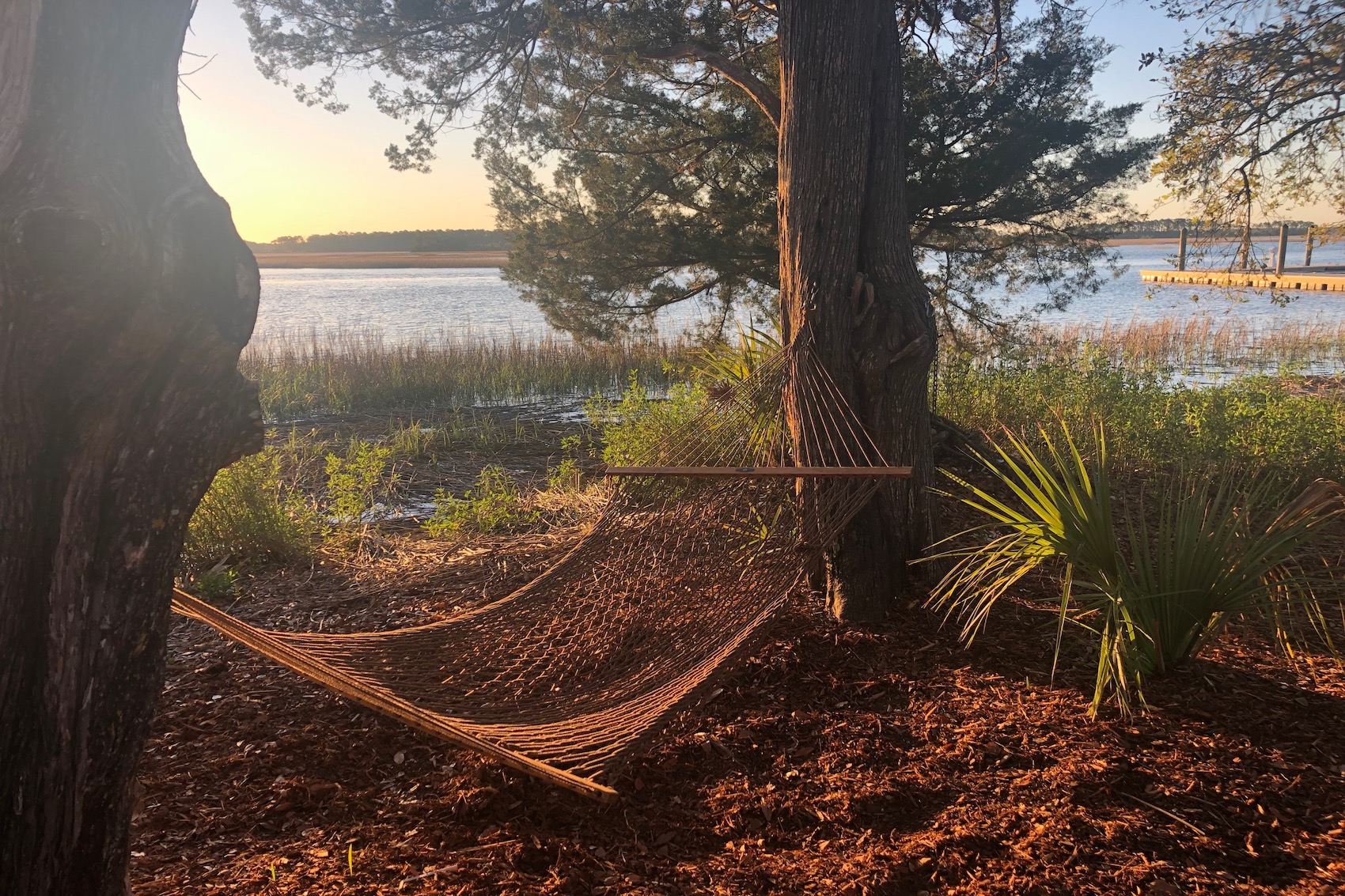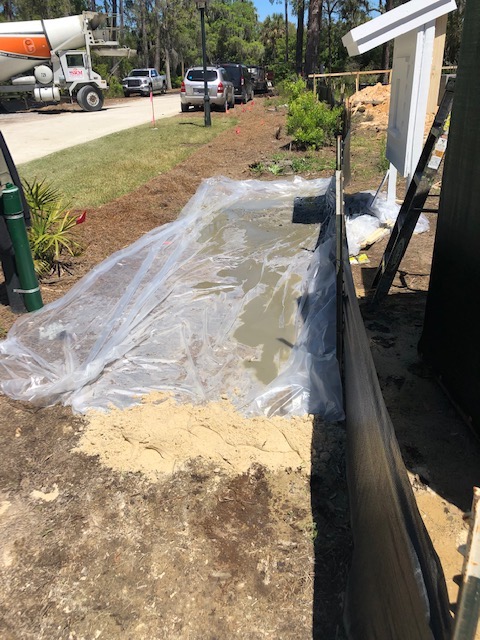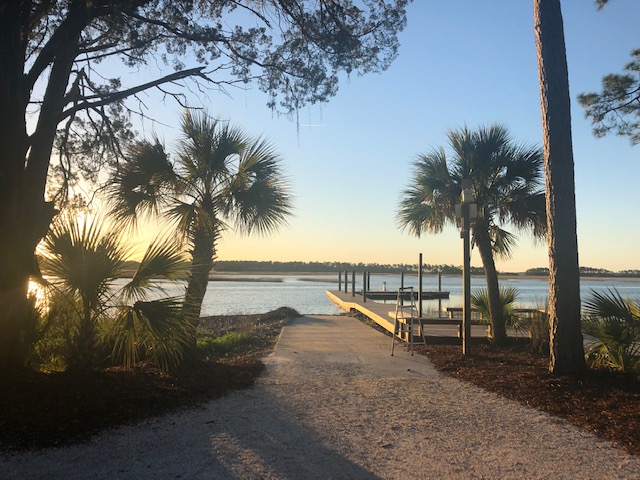I remember as a child listening to a Sunday school story. I didn’t like Sunday school much as it interfered with play and my sister and I had to walk quite a long way to get there. In Sunday school that day, the story was that of a chap building houses on different foundations one of which was sand – which did not go well for him. Times have changed and we now know how to build houses on sand and that’s exactly what we have faced on our first custom home build at Palmetto Bluff, in Moreland Village. In our case, we have now begun the process of what my American cousins describe as “going vertical.” Our custom home has departed from the two-dimensional world of architectural plans and city permits to begin its journey upwards. So, if your plans involve a custom build in Palmetto Bluff then just how does that start to happen?
Let us assume you have Town of Bluffton and Palmetto Bluff permits in hand. You have signage on site, funding in place and a topographical survey marking the building, access, heights, trees and anything else or related note. Then your first task is to prepare the land for building. You should fell any unwanted trees in the way of the build and identify those that should remain. Once that debris has gone then its time for the heavy equipment to pull the remaining stumps and scrape the site clear of all the organic topsoil and vegetation.
The subsoil at Palmetto Bluff is usually pretty good being a load bearing mix laid down after the last Ice Age, Pleistocene era deposits of alluvial silt which is a posh word for sand and clay. I’ve never seen any piling required to support footings though that does not mean it never happened. In the interim 10,000 years or so we also built up a good layer of organic deposits which we have stripped away. Our plans called for a mixture of concrete pads and spread footings for both stem walls and piers. We had some concern on the site in so far as heavy rains often resulted in standing water, slow to drain. The result after a fair amount of excavation, was two pads constituted from about 1000 tonnes of mixed clean sand and clay then compacted to remove water and entrained air pockets. In the process, we raised the ground level about 4 feet helping water to run off the site and into the watershed.The site lies between 6 and 9 feet above sea level in an area where Base Flood Elevation is AE13. That means that the lowest horizontal structural member of the main house needs elevating to 14 feet, being 1 foot of freeboard above BFE. The plan here called for a deep supporting pad to be installed to raise the general grade for the house above that of the perimeter road and to achieve the final 4 feet of elevation with a blockwork stem wall and piers. So, the house would appear elevated but not ridiculously so, retaining some reference with terra firma so to speak. By raising the general grade, we also ensured that rain drained away from the build towards the river, and we did not remain on the site in proximity to some ancient fortified lake.So, how do you bridge the gap from a large hole in the ground to a well-graded pad ready for footings? The first thing is to bring in clean dirt and lots of it. In our build, the first traunch was about 400 tonnes (20 truckloads) that brought us back to approximately ground level. We then called in the surveyor to mark the corners of the two buildings planned for the site and to also indicate the finished fill grade being at a 10-foot elevation. Once that was completed, a further 620 tonnes of fill dirt arrived to raise the grade of the site and create the building pads. At this point I’d introduce two words: Consolidate and Compact. To consolidate the dirt is to remove water from it resulting in a firm structure. To compact is to remove air or voids from freshly agitated fill dirt to achieve the same result. We have all played with sand at the beach and seen how it behaves when wet or stirred up. The same processes apply here. Just dumping many loads of dirt onsite does not create the necessary conditions to support a new home and quickly leads to settlement. So the fill dirt was rolled as it was spread out like a sort of geological layer cake. Once completed, we tested the final fill dirt for both moisture (<12%) and Compaction (>95%). In laymen’s terms, the sponge is dry and can take the foundation’s weight with minimal deflection.Next, we dug footings for two slabs, spread footings for numerous stem walls, isolated pads for pillars and strap footing to connect pillars that are close together. The drawing called for a turndown on the garage slab to support the edge. However, the edge was quite elevated so we changed it for a stem wall to limit washout of the backfill and it had the advantage of making it easier to add the drainage slope of 1/4 inch per foot of the garage slab yet keep the side walls horizontal.Isn’t it great when an author introduces a mass of technical terms without explanation maybe just to show how much he knows (or doesn’t!). Suffice to say that your contractor will have to make this all work, you can reasonably expect him to explain the process in easy terms and you can also expect the plan to change a little once construction begins. It’s just how the process works really.Well, it was a long day after quite a few long days and we are now ready (almost) to begin the process of bringing the home out of the ground. The blockwork and rebar are in for the main house, the slab and stem walls are poured for the garage. The slab has been power floated and smoothed and the night is upon us.This is a tight site, we have all the lumber and SIPS panels already on site for the barn and there is little space left. Concrete is a messy process and we were asked for a place to drain the wash from each of 8 trucks and 1 concrete pump. It takes just a little thought and a little sand/PVC sheet to make a drainage holding pad and filter and saves such a mess later on.The river is not 50 yards from our home and we are not in the business of letting cement effluent drain in the watershed as many might. The takeaway here, “do a good job as opposed to an adequate one. “So in essence, custom home building is merely a process. It starts with a dream, becomes a plan, then a hole in the ground. At that juncture, the destruction ends, and the build begins. At this juncture, you begin to see that dream become a reality and in that, lies the fun!Click on previous blogs below to follow the series along from the beginning:Palmetto Bluff: How to Finance and Build for Cash Flow
Palmetto Bluff: The Building of a Dream Home Begins
Custom Home Building in Palmetto Bluff
The Allure of Palmetto Bluff – Just 90 Minutes from Charleston
Palmetto Bluff: A Real Estate Investment in Vacation Rental
Interested in following this project as in progresses in real time? Be sure to sign up for our blog!
Interested in Learning More?
Our expert teams - from development, investment, real estate, and property management - have experienced it all and have the insight to help you along the way.
Find Out More




